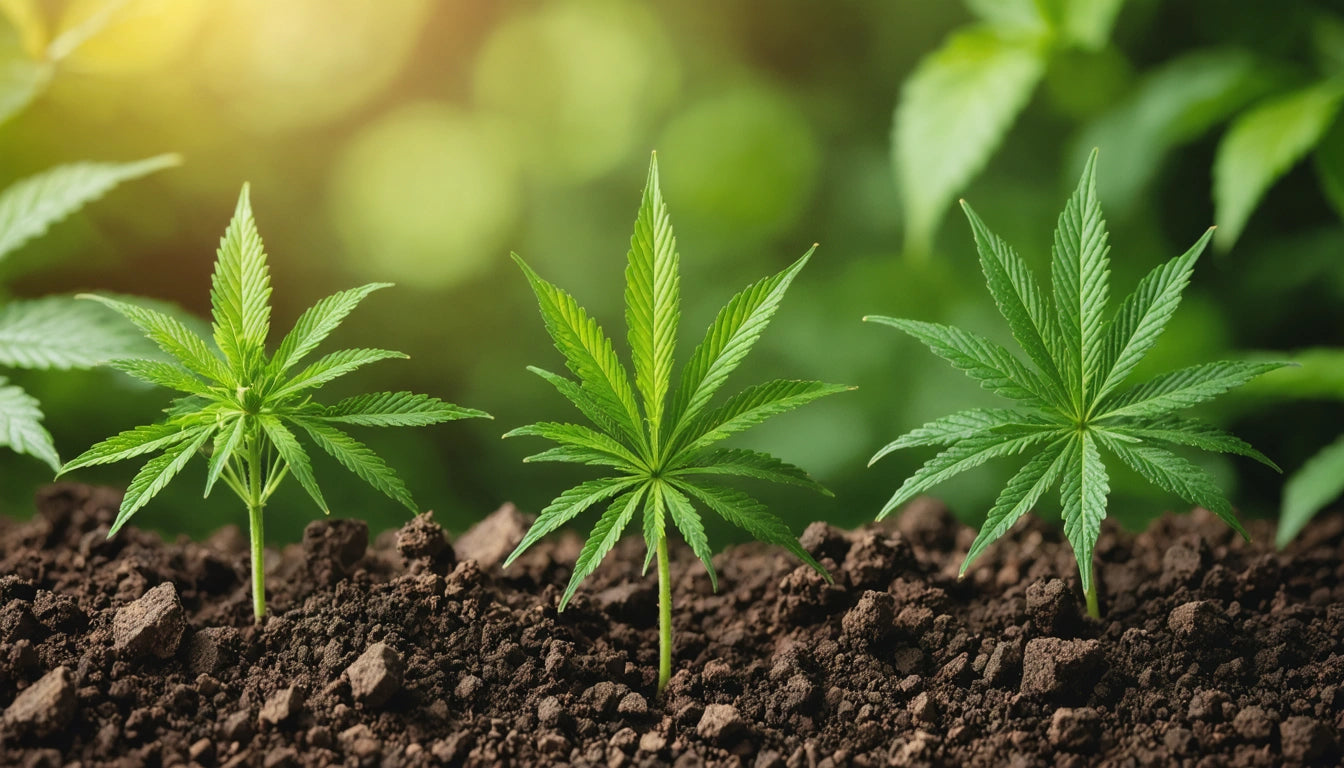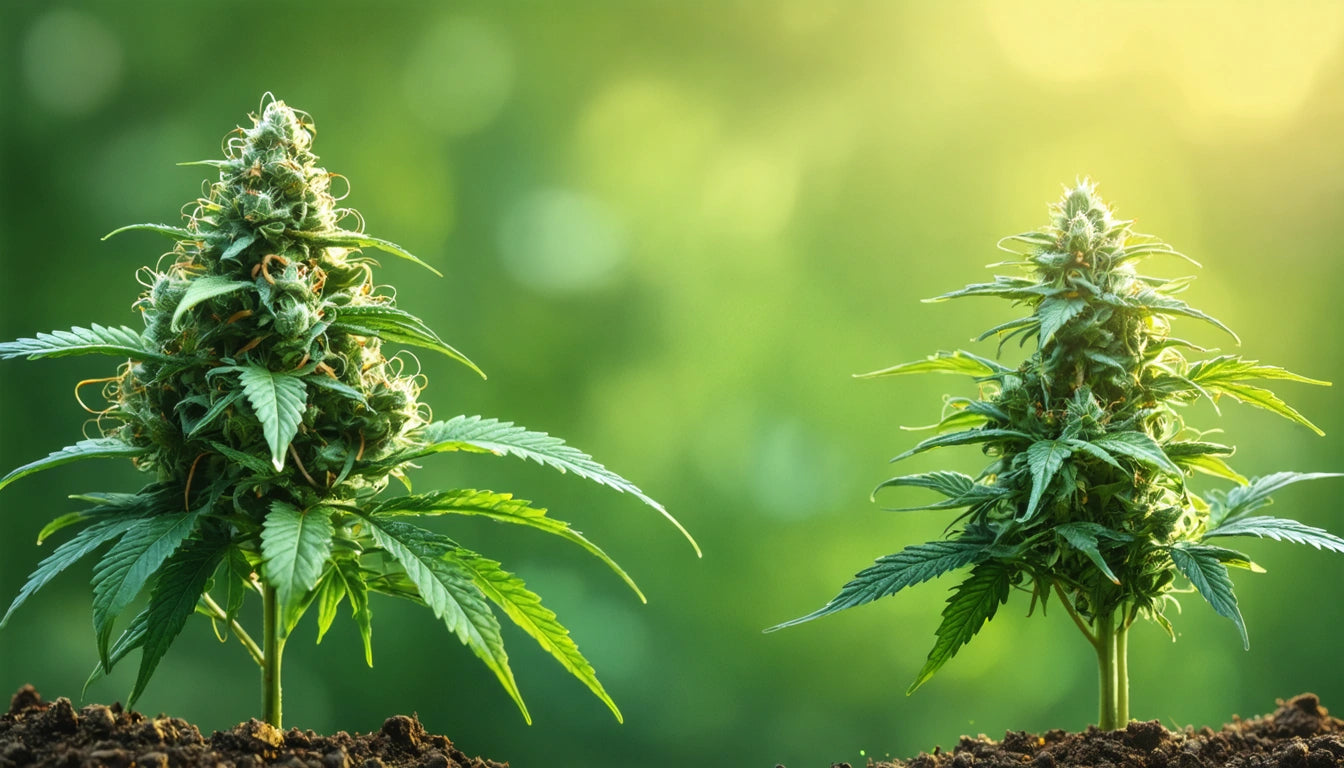Table of Contents
The Ultimate Guide to Choosing the Best Soil and Additives for Growing Cannabis
Selecting the best soil for marijuana plants is a critical decision that directly impacts your cannabis yield, potency, and overall plant health. Whether you're growing indoors, outdoors, or working with autoflowering varieties, understanding soil composition and additives can make the difference between mediocre and exceptional results.
Understanding Cannabis Soil Needs
Cannabis plants thrive in soil with specific characteristics. The best soil for growing marijuana provides:
- Excellent drainage while retaining adequate moisture
- Rich organic matter for nutrient availability
- Proper aeration for root development
- pH levels between 6.0 and 7.0
- Beneficial microorganisms for root health
These factors create an optimal environment for nutrient uptake and robust root development, essential for healthy cannabis plants.
Best Soil Types for Cannabis
Loam Soil
Loam soil is widely considered the best soil for marijuana plants, offering an ideal balance of sand, silt, and clay. This composition provides excellent drainage while retaining enough moisture and nutrients. Commercial loam-based potting mixes specifically formulated for cannabis offer convenience for beginners.
Coco Coir
Made from coconut husks, coco coir provides excellent aeration and water retention. While technically not soil, it's often used as a soilless medium or soil amendment. Coco requires more frequent feeding but offers superior control over nutrient delivery.
Super Soil
Super soil refers to pre-amended organic soil mixtures rich in diverse nutrients and beneficial microorganisms. These living soils require minimal supplemental feeding throughout the grow cycle, making them popular among organic growers seeking the best soil for growing marijuana in pots outdoors.
Essential Soil Additives
Even the best soil for cannibus can benefit from amendments that enhance its properties:
Perlite
This volcanic glass improves drainage and aeration. While beneficial, you can put too much perlite in soil cannabis mixtures, potentially reducing water retention. The ideal ratio is typically 10-30% perlite by volume.
Worm Castings
Considered the best compost for cannabis, worm castings provide slow-release nutrients and beneficial microbes. They improve soil structure and enhance the plant's natural defense mechanisms.
Bud Boosters
The best bud booster for soil typically contains phosphorus and potassium to support flowering. These additives are applied during the transition to flowering and throughout the bloom phase to maximize bud development.
For serious growers looking to maximize efficiency in their operations, quality processing equipment can significantly streamline your post-harvest workflow while maintaining the integrity of your carefully grown product.
Preparing Soil for Marijuana Plants
Knowing how to prepare soil for marijuana plants is crucial for success:
Testing and Adjusting pH
Before planting, test your soil's pH and adjust if necessary. Cannabis prefers slightly acidic soil (6.0-7.0). Dolomite lime can raise pH, while sulfur can lower it.
Pre-Conditioning
Allow organic amendments to decompose before planting. Pre-condition your soil mix for 2-4 weeks, keeping it slightly moist and turning it occasionally to promote microbial activity.
Mulching
The best mulch for cannabis includes straw, compost, or leaf litter. Mulch conserves moisture, suppresses weeds, and gradually adds nutrients as it breaks down. Apply a 2-3 inch layer around plants, keeping it away from the stems.
Outdoor vs. Indoor Soil Considerations
The best soil for marijuana plants outdoors differs from indoor requirements:
Outdoor Soil
Outdoor cannabis benefits from:
- Heavier soil with more clay content for stability
- Higher water retention to reduce frequency of watering
- The best potting soil for marijuanas plants outdoor often contains more organic matter
- Mulch application to maintain soil moisture and temperature
Indoor Soil
For indoor growing:
- Lighter soil mixes with more perlite improve drainage in containers
- Pre-fertilized mixes reduce the need for early feeding
- Sterilized soil prevents pest introduction
- Smaller particle size improves root penetration
Autoflower-Specific Soil Requirements
The best soil for cannabis autoflower varieties has unique characteristics:
- Lighter mix with lower nutrient concentration to prevent nutrient burn
- Higher perlite content (20-30%) for better aeration
- Pre-amended with slow-release nutrients
- pH slightly lower (6.0-6.5) than for photoperiod plants
Autoflowers have a shorter lifecycle and more sensitive root systems, making soil selection particularly important for maximizing their genetic potential.
Optimizing Soil for Maximum Yields
Beyond selecting the best soil for marijuanna, long-term soil management practices significantly impact harvest quality and quantity:
Crop rotation prevents nutrient depletion and pest buildup in outdoor gardens. Cover crops between cannabis plantings can rejuvenate soil health. Regular soil testing helps maintain optimal nutrient levels and pH balance throughout the growing season.
The best soil for marijuana seeds may differ slightly from mature plants, with seedling mixes containing lower nutrient concentrations to prevent burning delicate seedlings. As plants mature, gradually introduce stronger nutrient concentrations through top-dressing or liquid feeding.
Remember that soil is a living ecosystem. The best compost for weed contains diverse microbial life that forms symbiotic relationships with cannabis roots, enhancing nutrient uptake and disease resistance. Building this soil food web takes time but results in healthier plants and superior harvests.
By understanding the specific needs of cannabis at each growth stage and selecting the best soil for growing marijana accordingly, you set the foundation for a successful grow operation with maximized yields and potency.











Leave a comment
All comments are moderated before being published.
This site is protected by hCaptcha and the hCaptcha Privacy Policy and Terms of Service apply.